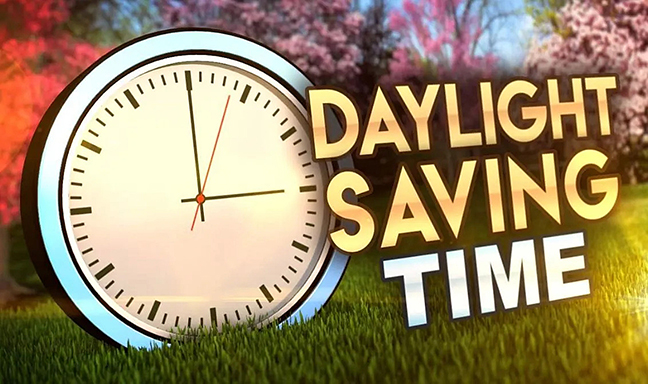Welcome!

Does anybody really know what time it is?
Well, we’re back to bright mornings and dark evenings — Daylight Savings has gone back into hibernation.
I’m sure you were faithful in turning your clocks back last Saturday night in preparation for returning to Standard Time. Ginny and I find that changing our timepieces is quite a job.
There’s not just our watches and the clock in the living room. We also have to change the digital clocks on the microwave and stove, both our bedside clock radios, and the time-and-temperature setting. And I’m sure there are others I’m forgetting. At least our phones are smart enough to change time on their own.
And, I know, we’re supposed to change the batteries on our smoke detectors every time we spring forward or fall back. But Ginny and I had to replace the batteries of two detectors this year when their chirping on a regular basis was driving us crazy. Why not just let them tell us when their batteries are low?
However, the biennial time changes remind me that it’s time to get my teeth cleaned. Oh, and wash my car.
Daylight Savings Time is considered to be the brainchild of New Zealand entomologist George Hudson, who, in the late 1800s, wanted to extend summer evening hours so he could look for insects. At least that’s the claim of a Reuters article published on Nov. 3.
The idea really took root during World War I when it was believed that more daylight in the evenings would conserve fuel for the protagonists. The US bandied the idea about until finally coming up with the Uniform Time Act in 1966. That’s when North Carolina adopted DST.
The reasons for springing forward and falling back are, to put it mildly, somewhat flawed. Some said extending daylight hours in the summer would benefit farmers. But farmers said it just messed up their schedules.
The idea that DST saves energy has been studied and found wanting. The Congressional Research Service has shown that changing the time has little, if any, effect on fuel savings.
That brings us to the health effects of DST. Studies have shown that adverse health effects can be linked to daylight saving time, such as a spike in fatal traffic accidents, heart attacks, strokes and sleep deprivation in the days after clocks are moved forward an hour.
And that’s not to mention the thousands of clocks broken when they’re thrown at the wall when the owners can’t figure out how to change the time.
Out of the 50 US states, only Arizona and Hawaii have chosen to keep the good ol’ Standard Time year-round. Arizona, of course, is so hot that they don’t want more sunlight at the end of the day.
Hawaii is so close to the equator that there’s not that much variation in daylight hours during the year. Besides, the locals want sunset to be early so tourists can watch the view before heading for the tiki bars.
But that brings up another DST topic. Unless Congress acts, Daylight Savings Time will continue in most states. So why not take advantage?
In the fall, someone could start a fall back party. Springtime, natch, would spawn spring forward parties.
Spring forward time could indicate the beginning of the warm season in America. That’s in spite of the fact that most northern states are still in the depths of winter in March. But it would be something to look forward to.
Fall back parties could signal the beginning of the holiday season.
But wait. The holiday season now starts at Halloween. Or is it Labor Day?
Before much longer, we’ll be starting the holiday season on the Fourth of July.
Or maybe Spring Forward will be the starting point …
No matter. Some people will use any reason to party.
Larry Penkava is a writer for Randolph Hub. Contact: 336-302-2189, larrypenkava@gmail.com.
